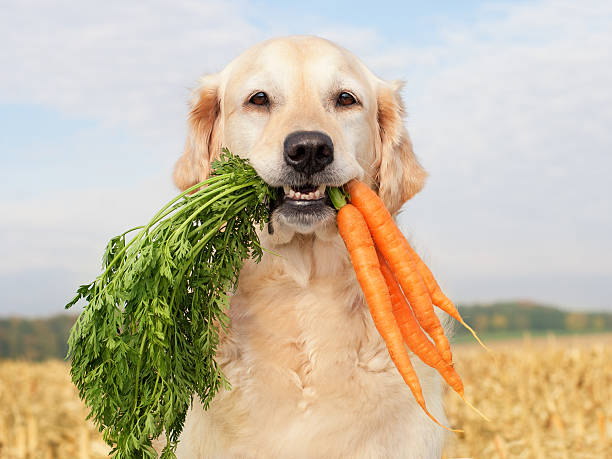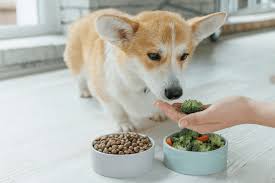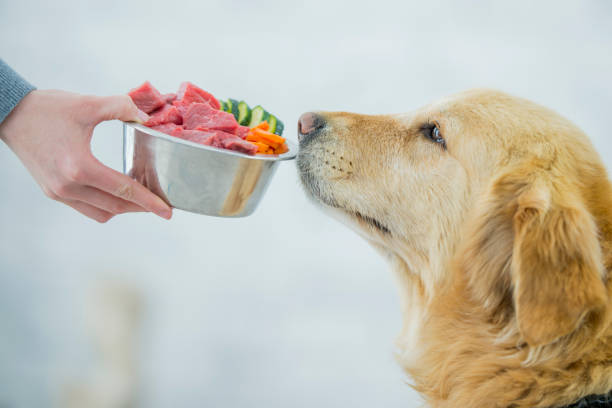
Introduction
Dog nutrition often presents pet parents with challenging questions. The topic of starchy vegetables is no exception. Some experts recommend them for specific nutritional benefits, while others caution against potential drawbacks. This comprehensive guide will explore whether starchy vegetables are beneficial or harmful for dogs, providing valuable insights into their nutritional content, the importance of moderation, and the potential health impacts.
What Exactly Are Starchy Vegetables?
Starchy vegetables are vegetables characterized by their high complex carbohydrate content. These carbohydrates mainly exist as starch, a polysaccharide composed of many glucose units. Unlike simpler carbohydrates found in fruits, starch digests slowly, providing a gradual release of energy.
Common examples of starchy vegetables include:
- Potatoes
- Sweet potatoes
- Squash
- Pumpkin
- Parsnips
- Peas
- Bananas
- Watermelon
While dogs can digest carbohydrates, it’s essential to remember their digestive tracts differ significantly from humans. Dogs have shorter digestive systems, meaning they require fewer carbohydrates to meet their nutritional needs.
The Glycaemic Index and Dogs
When evaluating vegetables for dogs, the Glycaemic Index (GI) becomes particularly important. GI measures how quickly foods containing carbohydrates elevate blood sugar levels.
- Low GI Foods: These vegetables have minimal carbohydrates, digest quickly, and have a minimal impact on blood sugar levels. Examples include broccoli, cucumbers, and cabbage.
- Medium GI Foods: Moderate carbohydrates, causing moderate elevation in blood sugar levels. These foods digest relatively slowly compared to low GI vegetables. Berries and apples fall into this category.
- High GI Foods: These are starchy vegetables that elevate blood sugar levels rapidly due to their high carbohydrate content. Examples include potatoes, sweet potatoes, and pumpkins.
Advantages of Starchy Vegetables for Dogs

While moderation is crucial, starchy vegetables offer several nutritional benefits that can enhance a dog’s diet when appropriately included.
Rich Source of Fibre
Starchy vegetables are packed with dietary fibre, aiding digestion and promoting healthy bowel movements. Pumpkin and sweet potatoes, for instance, are popular digestive aids, particularly beneficial for dogs recovering from illnesses or digestive disturbances.
Natural Prebiotics
Prebiotics nourish beneficial gut bacteria (probiotics), supporting gut health. Vegetables such as pumpkin, sweet potatoes, bananas, and apples provide natural prebiotic properties, fostering a balanced gut microbiome.
Nutrient-Dense Options
These vegetables are rich sources of essential vitamins and minerals, including vitamins A, B6, C, E, and K. Additionally, minerals like potassium and beta-carotene are abundant, crucial for overall health and immune function.
Enhanced Fat Metabolism
Dogs needing low-fat diets, either due to obesity or pancreatitis, can benefit from moderate starchy vegetable intake. These foods can boost fat metabolism, offer antioxidative benefits, and improve gut barrier function, supporting overall immune health.
Improved Stamina for Active Dogs
Active or sporting dogs require sustained energy levels. Starchy vegetables provide slow-release energy, enhancing endurance and stamina, especially on physically demanding days.
Enhanced Immune Function
Regular, moderate consumption of starchy vegetables can support overall immune function due to their high levels of antioxidants and vitamins. Sweet potatoes and pumpkins, for example, are known to enhance immune responses.

Skin and Coat Health
The vitamins and antioxidants in starchy vegetables can improve skin health and contribute to a glossy, healthy coat. Vitamin E, commonly found in these vegetables, plays a crucial role in skin repair and maintenance.
Potential Risks and Drawbacks
Despite their benefits, starchy vegetables may pose health concerns for some dogs, especially if overfed.
Yeast Infections and Skin Itching
High starch diets can exacerbate yeast overgrowth and skin irritation, common in dogs prone to allergies. Yeast feeds on sugars derived from starches, potentially worsening skin conditions.
Risk of Weight Gain
Due to their carbohydrate content, excess feeding of starchy vegetables can contribute significantly to weight gain, particularly in sedentary or less active dogs.
Increased Risk of Diabetes
Consuming starchy vegetables frequently and in large quantities may result in insulin resistance, leading to canine diabetes. Blood sugar spikes from high GI foods should be managed carefully.
Anti-nutritional Factors
Starchy vegetables sometimes contain anti-nutrients like phytic acid, lectins, oxalates, tannins, and glucosinolates. These compounds can hinder nutrient absorption, potentially diminishing the nutritional value of the diet.
Stress on the Pancreas
Dogs with pancreatic disorders or pancreatitis should limit high-starch foods, which can place additional stress on the pancreas, complicating recovery or management.

Changes in Body pH
Dogs naturally maintain an acidic gastrointestinal tract optimized for meat digestion. Feeding excessive starchy vegetables can cause alkalosis (body becoming overly alkaline), negatively impacting long-term digestive health.
Historical and Scientific Background
Historically, dog diets were predominantly meat-based. Commercial dog foods have increasingly incorporated starchy vegetables due to their affordability and nutritional density. Recent veterinary studies highlight the nutritional versatility of vegetables like sweet potato and pumpkin, validating their controlled use as dietary supplements rather than primary nutrition sources.

Feeding Guidelines and Recommendations
To safely introduce starchy vegetables into your dog’s diet, follow these guidelines:
- Introduce gradually and observe your dog’s reaction.
- Limit serving sizes to prevent weight gain and digestive upset.
- Select vegetables appropriate to your dog’s specific health needs.
- Consult your veterinarian, especially if your dog has underlying health conditions.
Conclusion
Incorporating starchy vegetables into your dog’s diet can offer significant nutritional advantages when done cautiously and thoughtfully. Understanding your dog’s unique nutritional needs, health conditions, and activity levels is key to determining if and how much starchy vegetable should be included.
This guide aims to equip pet parents with balanced and scientifically-backed insights, enabling informed decisions about canine nutrition. Always consult your veterinarian or pet nutritionist for personalized advice tailored to your dog’s specific health profile and lifestyle needs.

